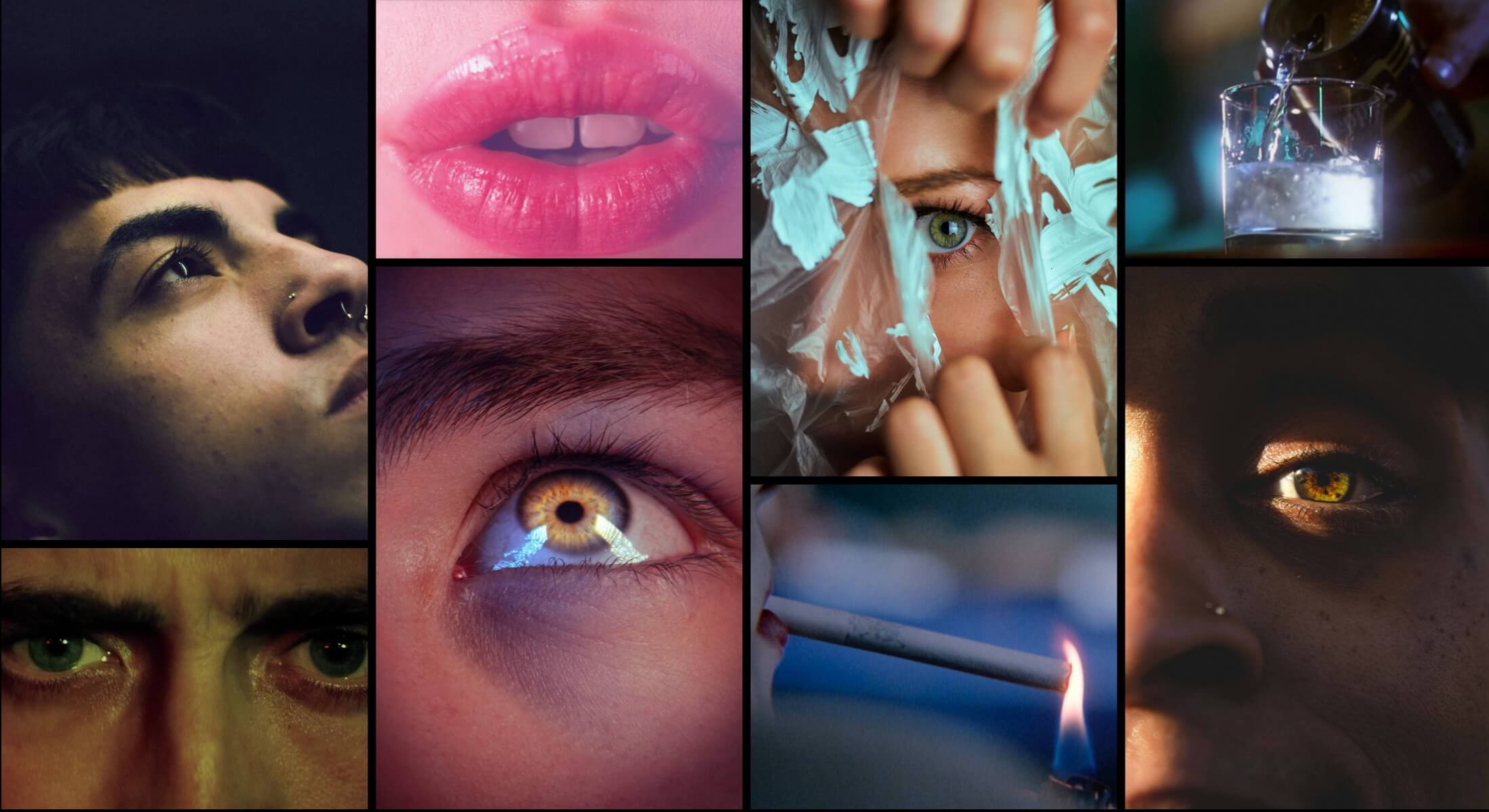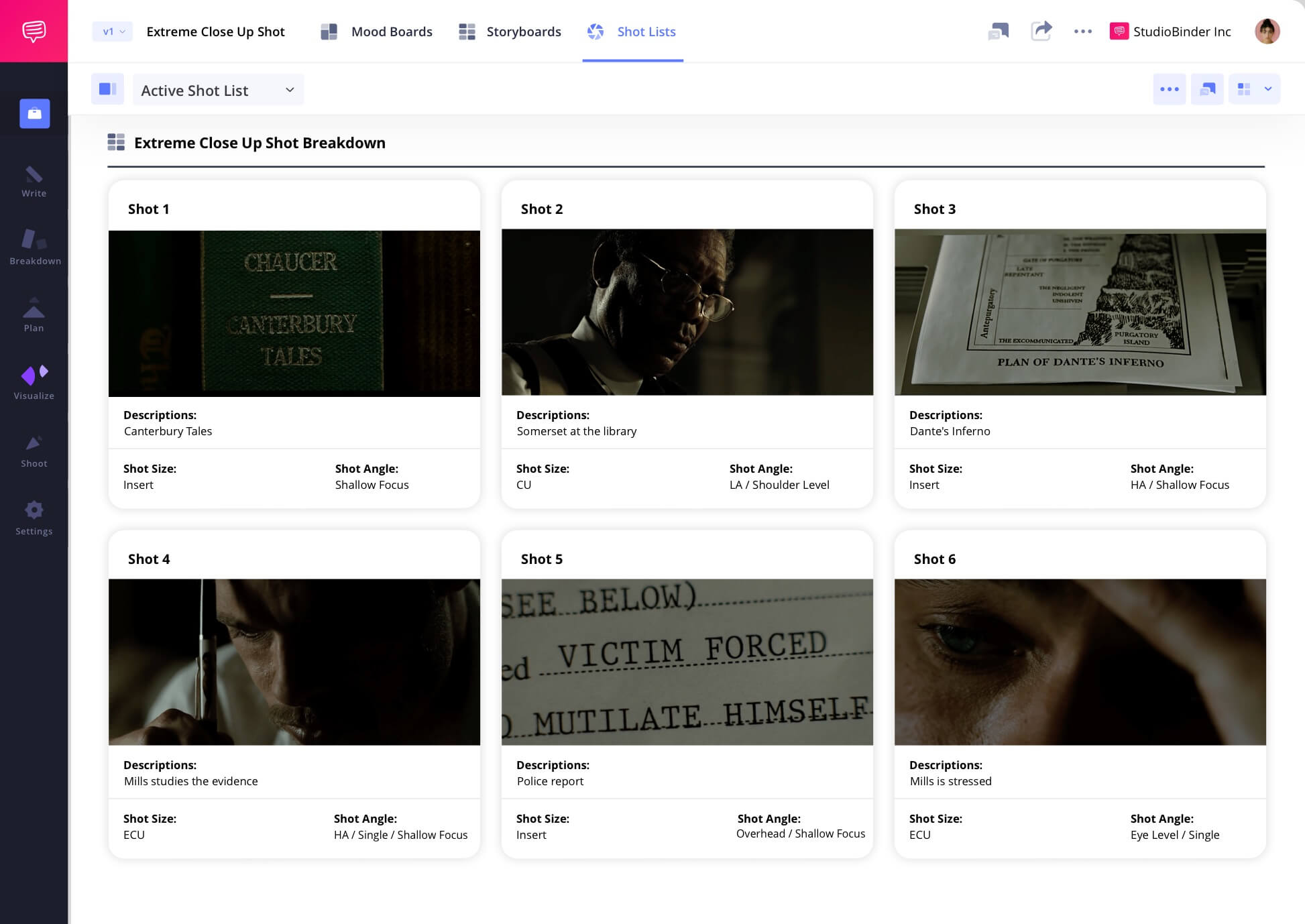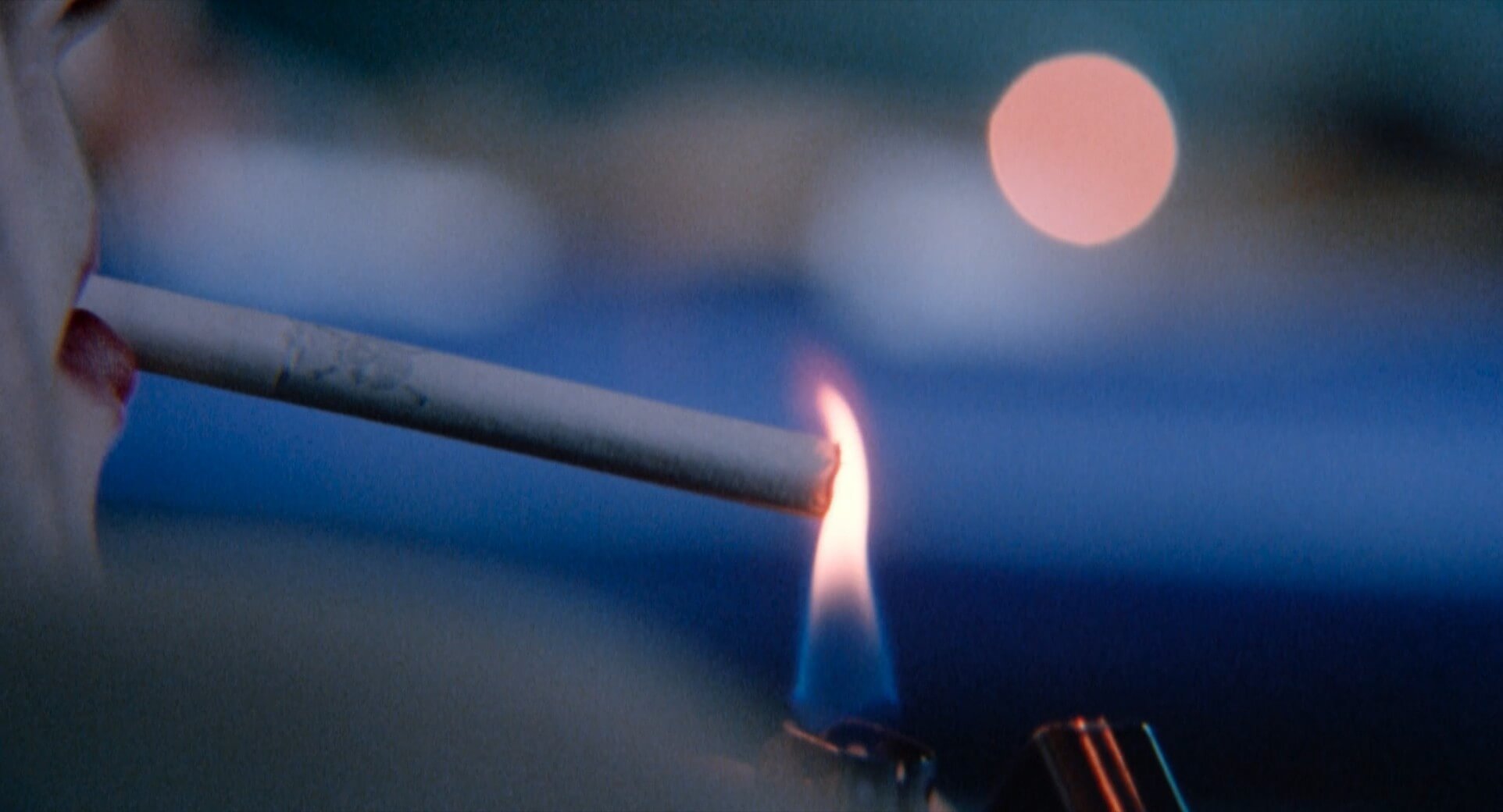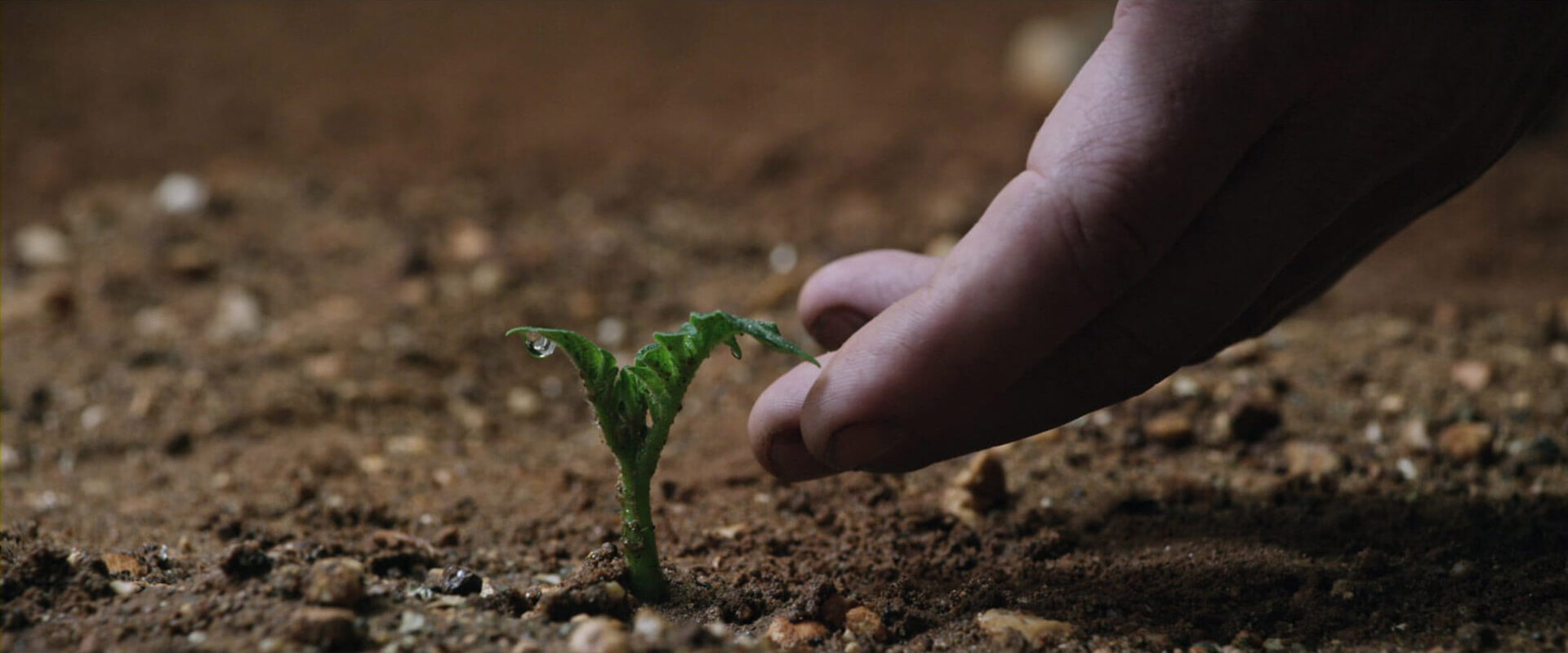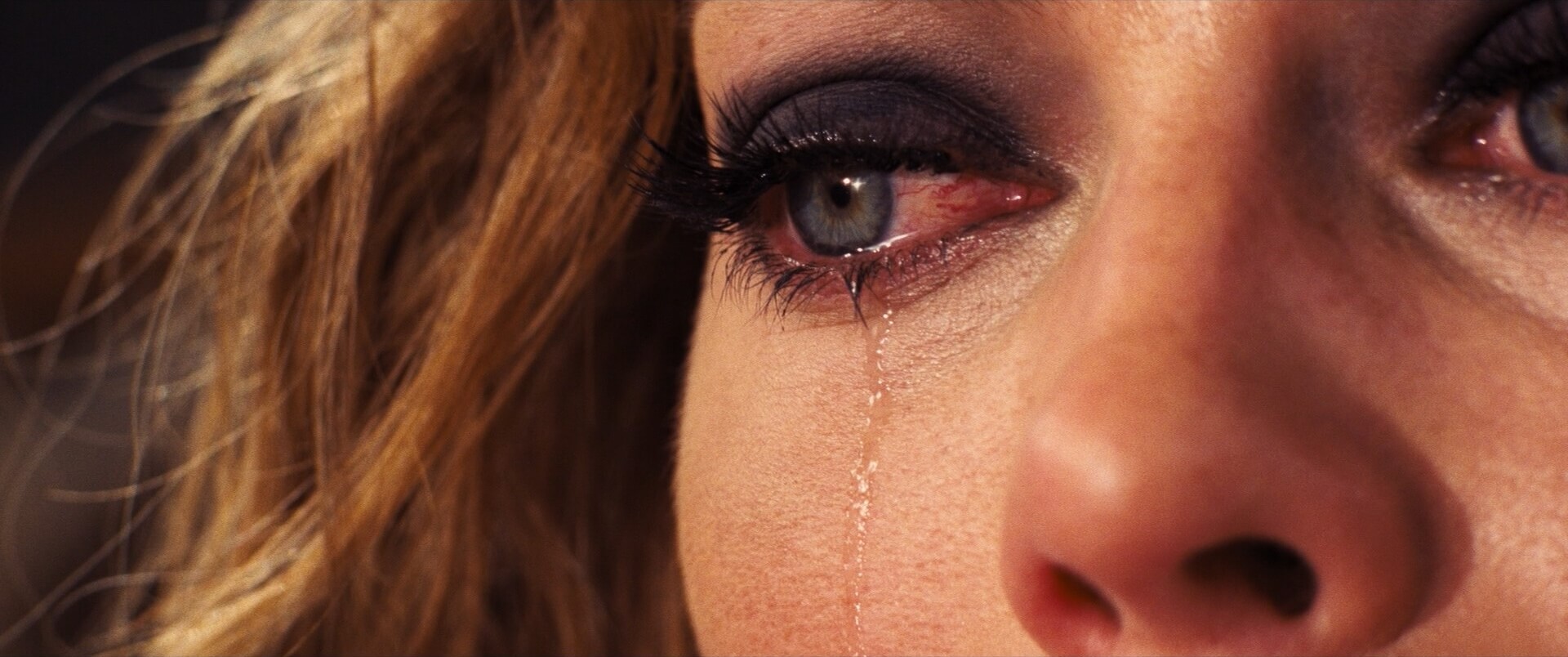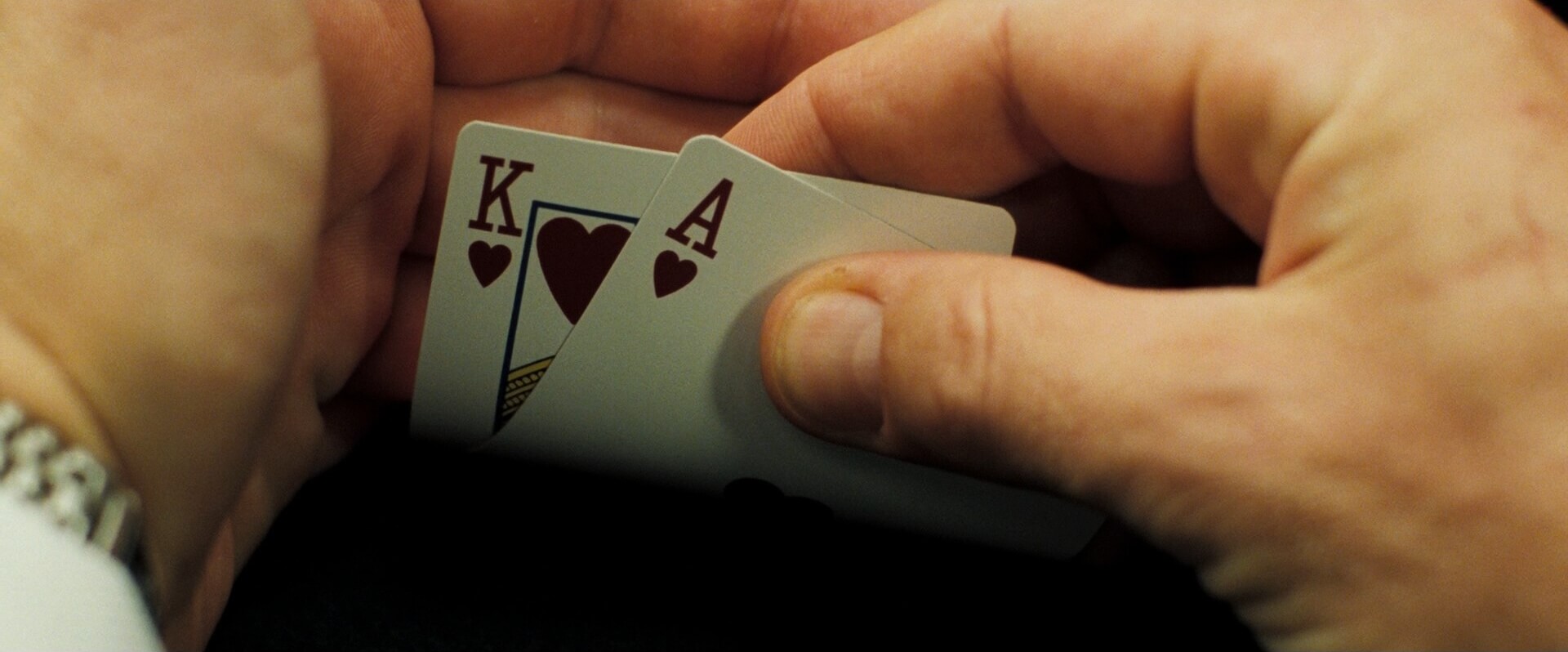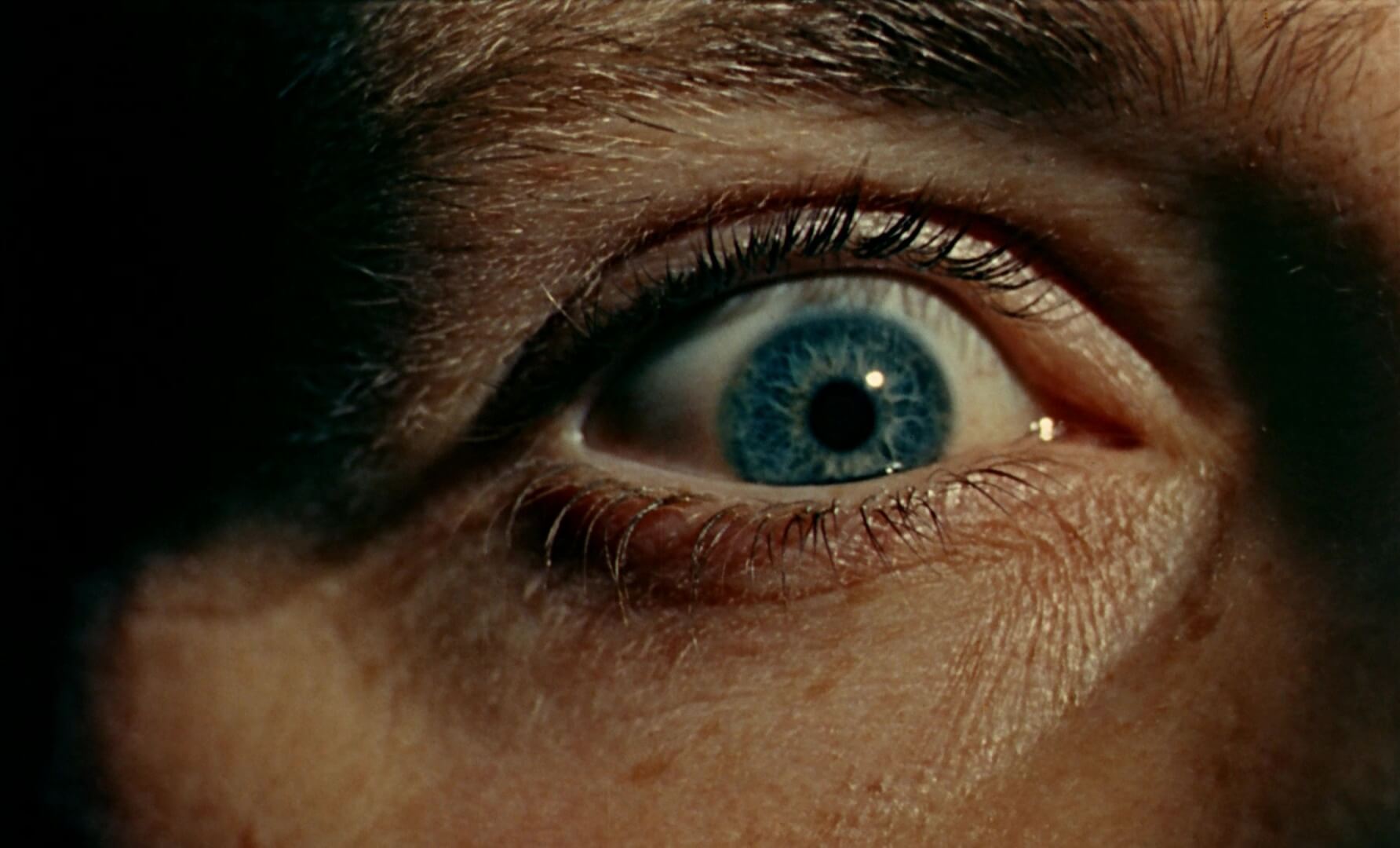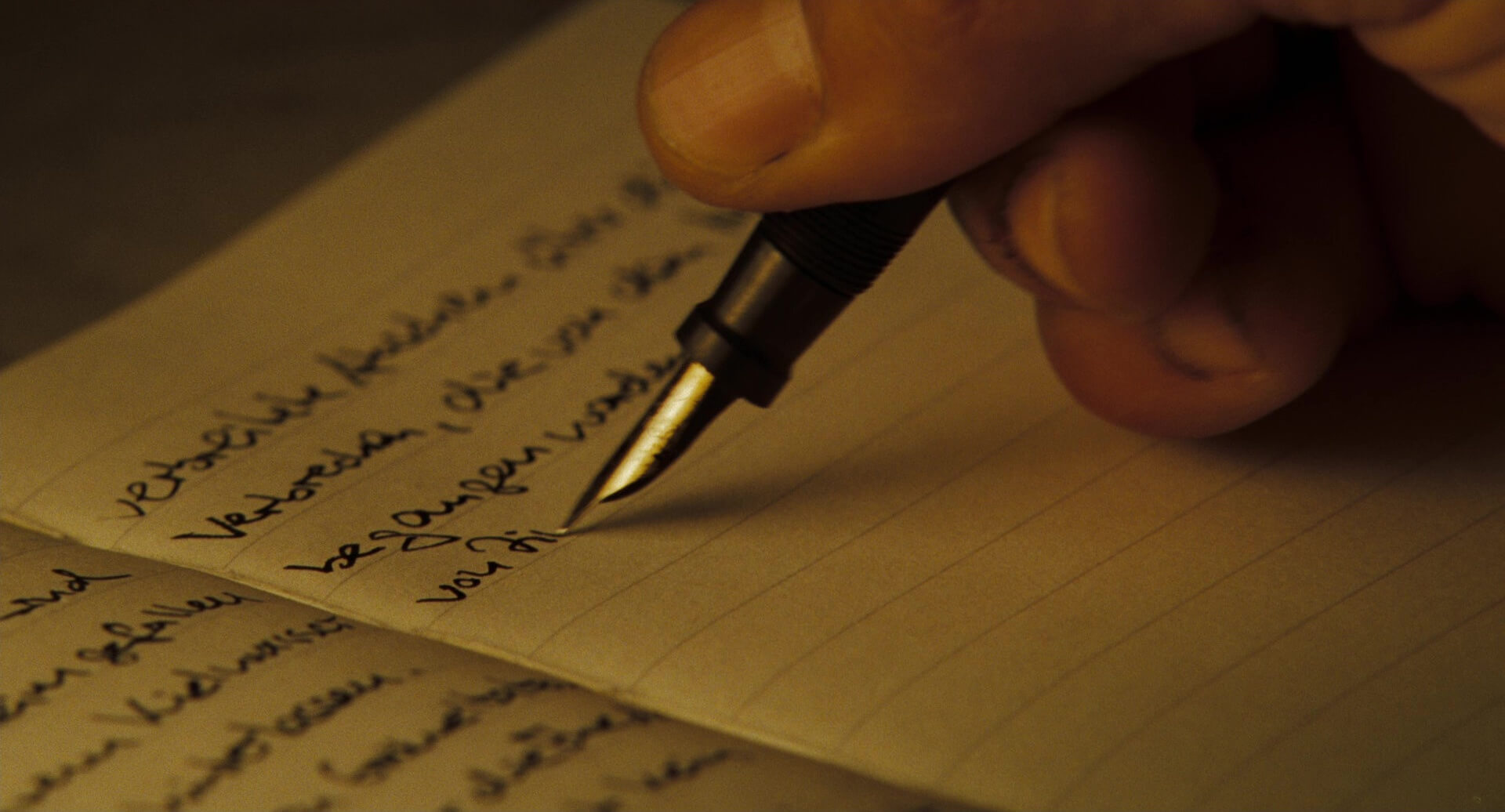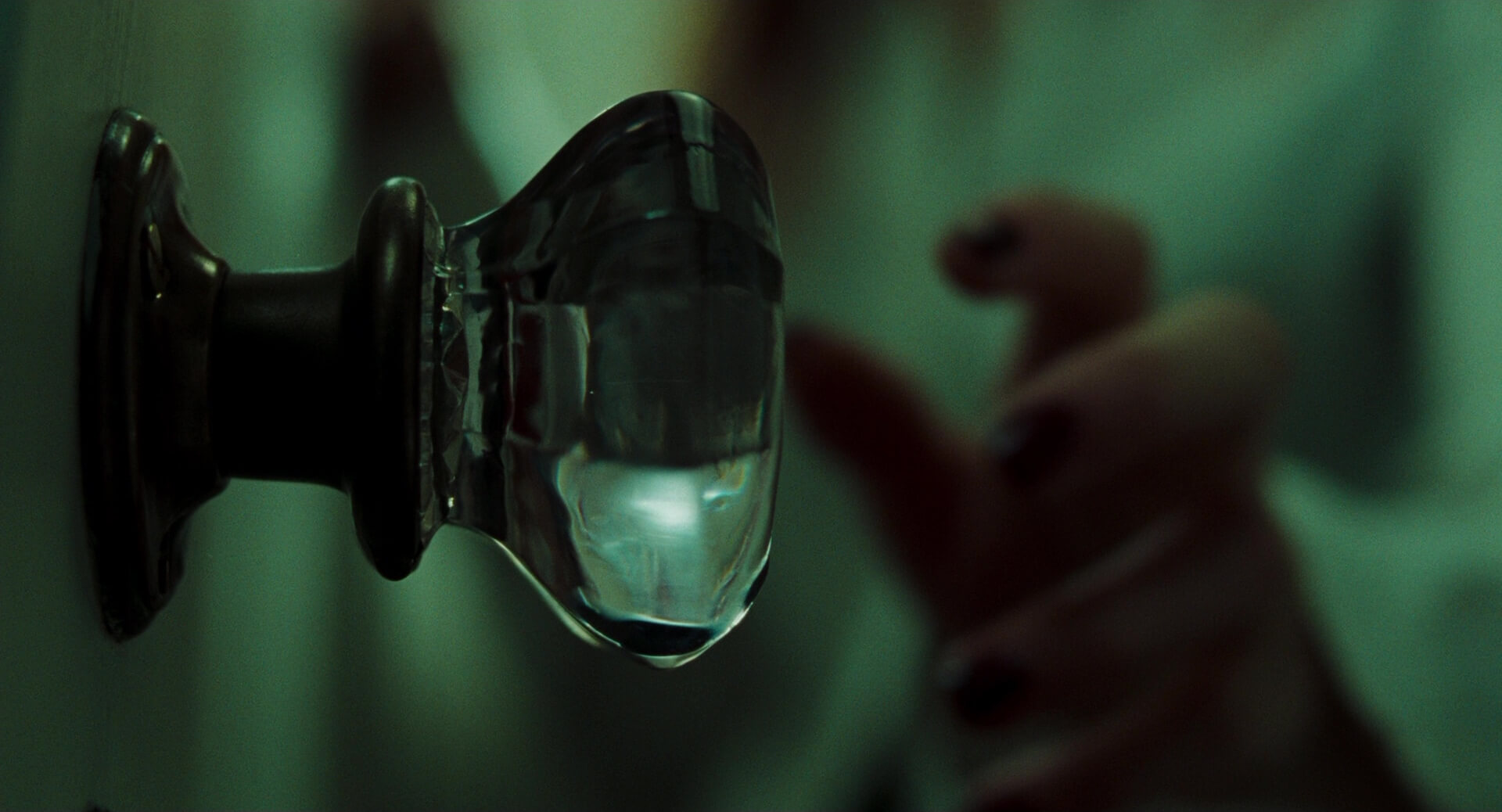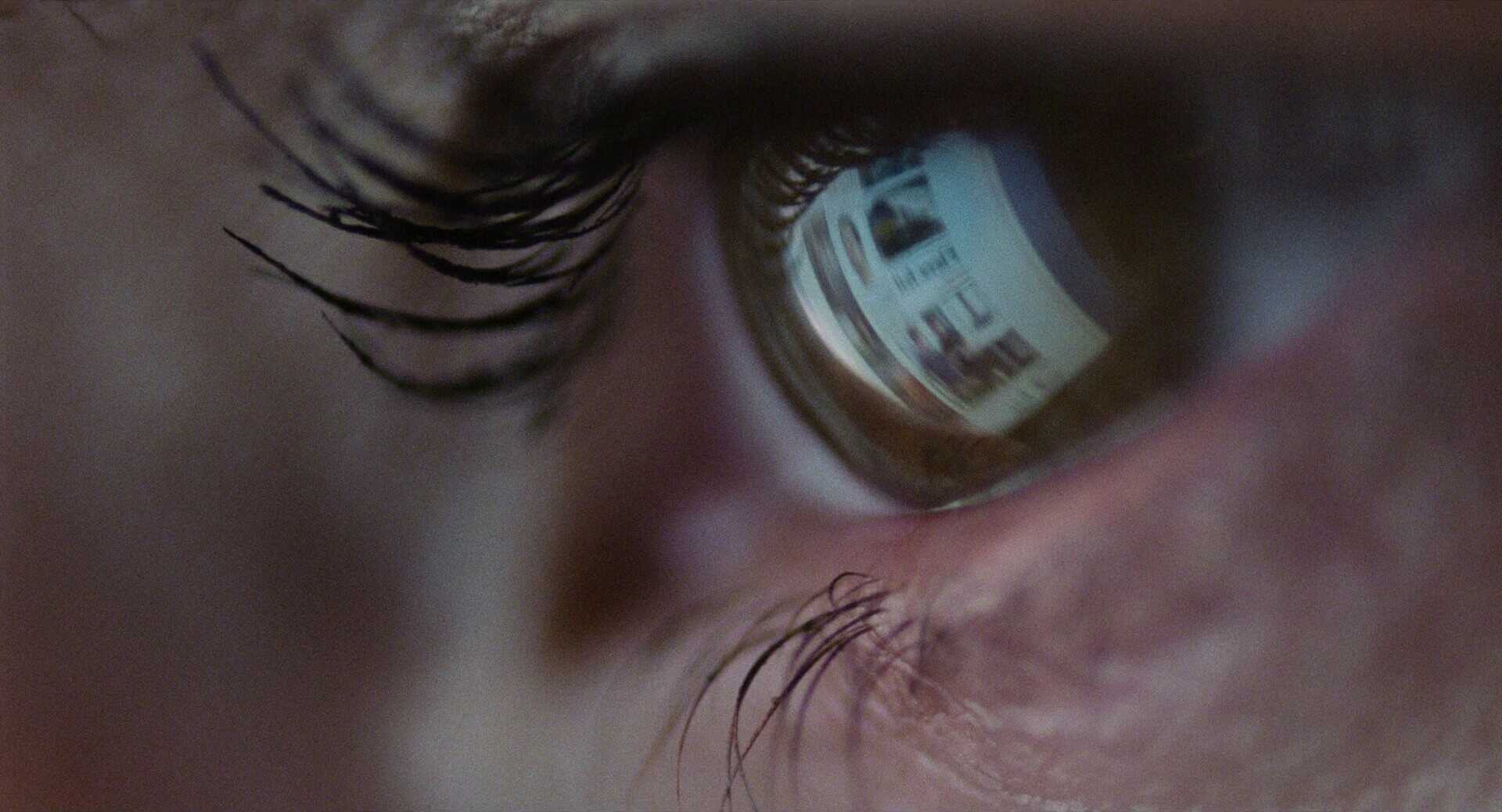Extreme Close Up Definition
What is an extreme close up shot?
An extreme close up shot focuses on a specific area of a character's body/face. Whereas a close up will capture the entire head with some room to spare, an extreme close up shot focuses on a specific area. For example, a shot that only shares a character's eyes or mouth. This type of framing can also be used to focus on props or inanimate subjects, but these are typically referred to as insert shots.
For more, read our full breakdown of the extreme close up shot, including examples that illustrate its various functions.
Before we dive into the extreme close up shot and everything it can do, let's start with some examples to familiarize ourselves with this type of camera shot. Open this visual gallery of extreme close up shots to see the variety and their functions firsthand.
Meanings & Purpose
Extreme close up shot examples
There is a variety of ways to use an extreme close up shot. Depending on the context of the scene, they can serve many functions. But the core value of an extreme close up shot is emphasis. Whatever the subject of the shot may be (a face, a prop, a clue, etc.), the director has chosen to add narrative or emotional emphasis to it.
Here are four broad yet common applications.
Isolates a specific subject
Enhances the import or meaning
Emphasizes an emotion
Narrows the audience's attention
Usages
Why are extreme close up shots used?
There is no single way to use an extreme close up shot. In film language, you might consider the ECU as an exclamation point or BOLD text because it emphasizes any subject. For that brief moment in the film, the director shines a light on something to give it meaning and power. Below are just a few ways that an extreme close up can be used.
Emotion
When a character is experiencing an emotion (sadness, happiness, shock, etc.), the best way to supercharge it is to highlight the face or just the eyes.
Details
If a specific detail or action needs to be shared, the ECU isolates it to ensure that the audience registers it and understands the significance in context.
Meaning or Importance
An ECU is an excellent way to imbue the subject with value and meaning. It is shorthand with the audience that this "thing" is important and meaningful.
Point of view
If Character A is looking at something, the following shot is often an extreme close up or insert shot, allowing us to see what they see and how they see it.
Qualities
Close up vs extreme close up shot
The difference between a close up shot and an extreme close up shot can be slight. If the subject is a character's face, a close up will show the entire head with a little room to spare above and below. If the head is cropped (e.g., from the forehead up), that would be an extreme close up.
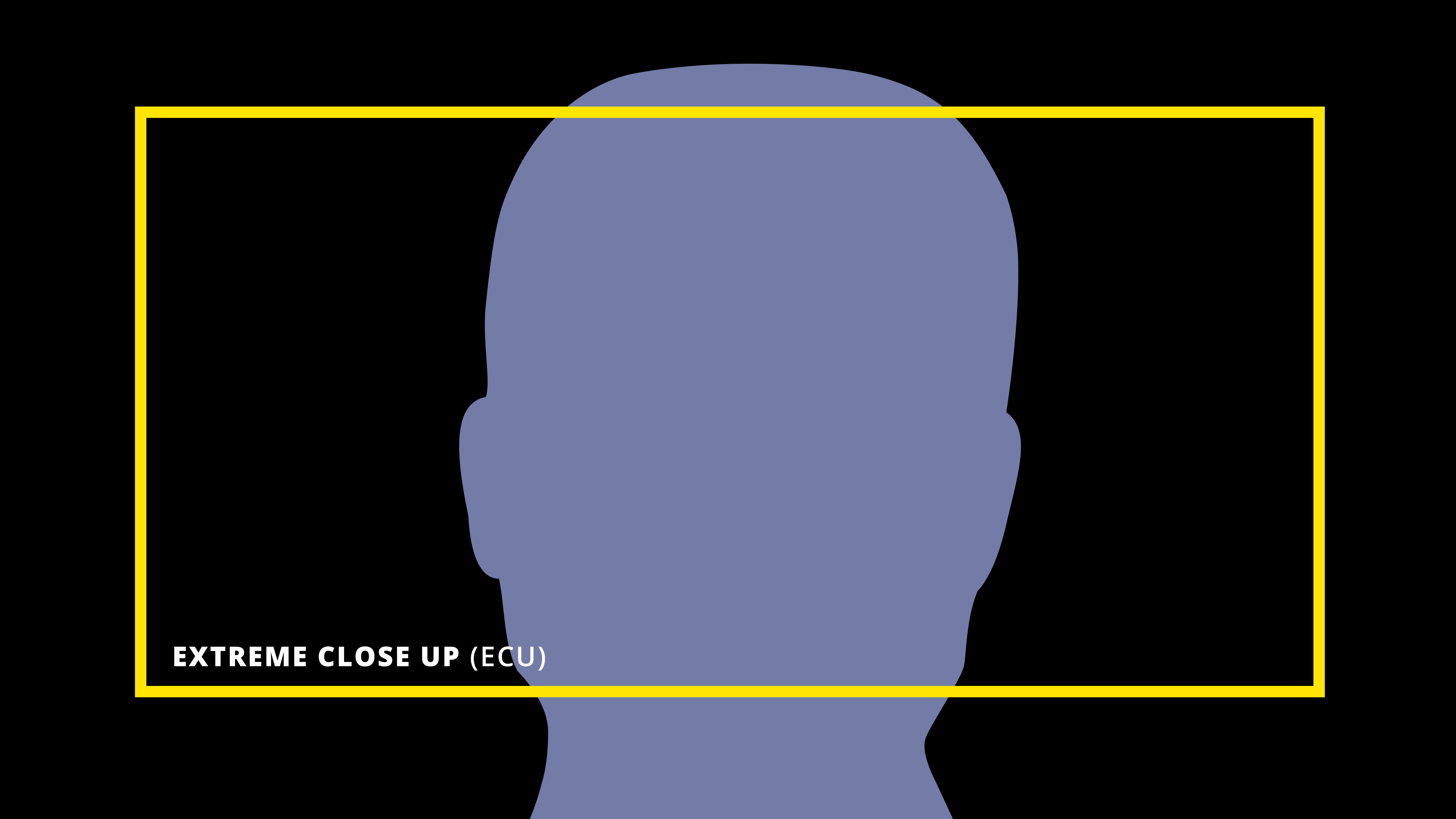
Case Study
Shot listing an extreme close up shot
To get a more filmmaker's understanding of how to use a extreme close up shot, let's look at a specific example. In Se7en, Det. Mills and Det. Somerset must focus to unravel the John Doe case.
Click the shot list below, to see the full scene broken down, and notice the tight, extreme close up shots echo the amount of focus needed and the severity of this case.
An extreme close up shot works just fine all by itself, but it doesn't have to work alone.
Let's dive into the creative applications of an extreme close up when paired with other camera techniques.
Unique Pairings
What does an extreme close up shot do when combined?
How to maximize the extreme close up shot
As you know, there are many camera techniques, each with their own unique properties and effects. In isolation, they work just fine. But in combination, these camera techniques can take on more nuanced and effective qualities. Let's see what happens when you combine the extreme close up shot with the following camera techniques.
- Push: Pushing into an extreme close up multiplies the emphasis gradually rather than instantly with a cut to an ECU.
- Whip Pan: A flashy and dramatic way to transition to an extreme close up, giving the moment a healthy dose of kinetic energy.
- Snorricam: Locking the camera onto the subject in an extreme close up creates a tense and claustrophobic effect.
- Zoom: A zoom helps to guide the viewer's attention directly where you want it, whereas a cut to an ECU might not be as obvious.
- Rack Focus: Another way to draw the viewer's attention from two elements using shifting depth of field to isolate and emphasize.
- Tilt or Pan: By moving the camera from one subject to another, you create a connection or relationship between them for the audience.
- Crane: Starting in a wide and moving into an ECU gives us the environment first and then emphasizes the subject within that context.
- Shallow Focus: If the tight framing wasn't enough, the shallow focus sharpens our attention on the subject even further.
- Split Diopter: Pairing two subjects at different distances creates a juxtaposition and a connection that's otherwise impossible.
Frequently asked questions about the extreme close up
An extreme close up shot isolates a portion of a character's face or body, or focuses on a specific detail, prop, or action.
An extreme close up shot is used for a variety of purposes but most commonly to isolate details, enhance a character's emotional state, give meaning or significance to the subject, or guide the viewer's attention.
Depending on the subject, an extreme close up shot can be a pair of eyes, a mouth, a hand, a foot, or any other isolated part of the body. Insert shots, which are often extreme close ups, can be any prop, text, clue, action, etc. that is shown by itself and typically takes up most of the frame.
Shooting an extreme close up shot is very simple:
- Choose your subject and decide just how "extreme" you want your close up to be.
- Select your lens.
- For a less extreme close up, longer lenses are commonly used.
- For a more extreme close up, the lens should have a very short focusing distance, like a macro lens.
- You might also use a diopter to decrease the focusing distance of your lens.
